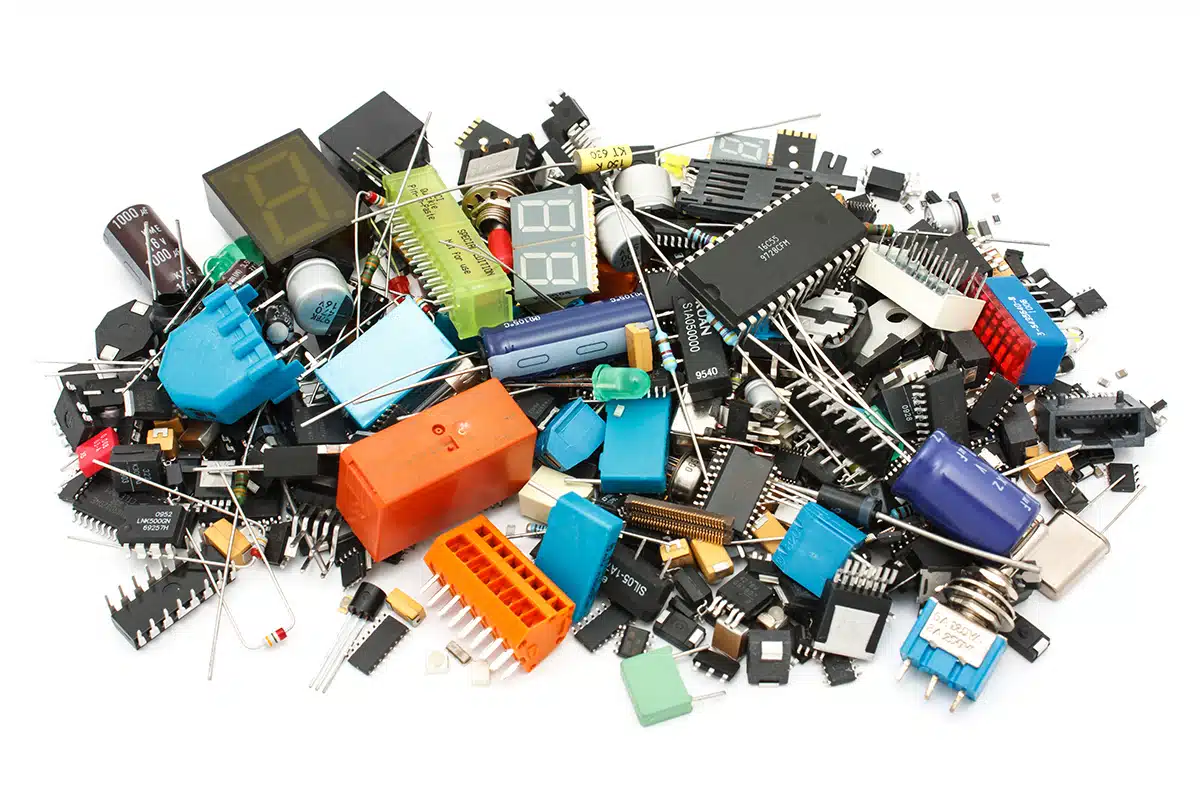When chefs create a signature dish, it isn’t a willy-nilly process. If they want a consistent product every time, they must first develop a recipe—one that lists all the ingredients needed, quantities, and clear instructions for assembly. Electronics manufacturers are a bit like chefs. When building a product, they can’t just “wing it” and hope everything comes together correctly. They need a proper recipe for manufacturing, i.e., a well-developed bill of materials (BOM).
The Critical Functions of Your Bill of Materials
A robust bill of materials outlines the components and materials required to manufacture your product and provides instructions for assembling those items. It acts as a centralized source of information about your product’s design and constituent parts. A thorough and accurate BOM is especially important when multiple parties are involved in the manufacture of your product, in order to ensure effective communication and avoid manufacturing missteps. Sharing an outdated BOM with your contract manufacturing partner can lead to unnecessary mistakes and product launch delays.
Depending on your product and its specifications, you may need multiple BOMs, as they serve different purposes. Two of the most common types of BOMs are the engineering bill of materials (EBOM) and the manufacturing bill of materials (MBOM). These two types of BOMs work together in the following way:
Engineering Bill of Materials (EBOM)
An engineering bill of materials is a product recipe structured from the design standpoint. Typically created by engineers using computer-aided design (CAD) or electronic design automation (EDA) software, an EBOM states the exact quantities of each component inside the product but does not reflect all the materials consumed to make the product.
By laying out an easy-to-follow, detailed plan, your BOM makes the entire manufacturing process more efficient and accurate.

Manufacturing Bill of Materials (MBOM)
A manufacturing bill of materials is based on a product’s EBOM, but focuses on the manufacturing process itself. Whereas an EBOM is created with design in mind, an MBOM looks at the total amount of each input needed to bring a design to life. As an example, if your product requires 10 grams of aluminum, an EBOM would list only the 10 grams required in the finished product. But an MBOM would take waste into account, and note that making the product would in fact require, say, 11 grams of aluminum, with one gram lost to scrap during manufacturing. Note that because the MBOM is derived from the EBOM, if your figures are off in your EBOM, you will also have errors in your MBOM.What to Include in a Bill of Materials
Almost all products will require a BOM for effective manufacturing and supply chain management. However, the level of detail provided by a BOM can vary based on the industry, the product’s complexity, or a third-party manufacturer’s requirements. BOMs for electronic products can be particularly complex, and will typically include all or most of the following 13 descriptors:
- Part Number: A unique identifier for each component.
- Part Name: A unique name for each part for easy identification.
- Description: Details about each part to ensure clarity.
- Quantity: The number of each component required for one unit of the product.
- Unit of Measure: The specific unit used for quantity, i.e., meter, pound, etc.
- Reference Designators: The specific locations on the product where each component is used—for example, where the part fits on your printed circuit board assembly.
- Materials: Information about the raw materials used for each component.
- Cost: The cost associated with each component, used to calculate total production cost.
- Suppliers/Procurement: Information about how each component is purchased or made, as well as the suppliers providing each component.
- BOM Level: An assigned number to detail where each part fits in the hierarchy of your multi-level BOM. For example, your product’s PCBA would be on one level, and the components of the PCBA would be on a more detailed level of the BOM hierarchy.
- Phase: Where each part is in the manufacturing process, i.e., in production, unreleased, or in design.
- Lead Time: The time required for each component to be delivered.
- Assembly Instructions/BOM Notes: Steps for putting together the final product and any other helpful guidance or information.
The Advantages of Using a Bill of Materials
Planning
A BOM will help you plan your material requirements as well as the purchase details of your product’s raw materials. With an accurate estimate of material costs, you can reduce waste, as well as delays and other problems that can be caused by material shortages. Your BOM can even help you meet regulatory compliance requirements—a crucial benefit for highly regulated industries such as aerospace, defense, and medical technology.Management
A well-structured bill of materials can help you control your budget through efficient inventory management. It will also help you maintain accurate records to stay alert to material shortages and allow for planned and unplanned downtime. With a good bill of materials, you’ll be less likely to encounter surprises and more likely to stay on schedule.
Process Improvement
There’s always room for improvement in your manufacturing processes, and a BOM can play an important role. The increased clarity a BOM brings can help you improve your supply chain security, identify the cause of a product failure, and find vulnerabilities in both hardware and software components. Identifying errors, vulnerabilities, and failures promptly will help you replace faulty components quickly—saving money and time and even preventing the failure of your product.

Five Common BOM Management Mistakes
Time-to-market demands can make it tempting to cut corners with your BOM. But in the end, that approach will most likely lead to wasted time, lost money, and shortages of essential parts. As you prepare your BOM, make sure you don’t fall victim to any of these five common mistakes:
Missing Components
Important components or parts are inadvertently omitted from a BOM in multiple ways. Data loss during export is the most common one. Another path to inaccuracy is human error: designers and engineers can forget to add essential components to the list, or team members may incorrectly enter data. This is why clear communication among product teams is so important. The better your company’s teams collaborate—and any third-party partners—the more likely you are to catch these errors at an early stage when the cost and effort to fix them is minimal.
Costing and Component Mistakes
Ideally, components and their costs should be checked early in the planning stages. Not only is choosing the wrong component costly, it can also lead to the failure of your product. Here’s where an experienced electronics manufacturing service (EMS) provider can make a real difference, as it can identify and source well-priced, quality components and alternative ones, just in case.
Inadequate Documentation
While a list of your parts and sub-components is essential to a BOM, it’s not enough. It’s also important to include the documentation needed to support the manufacturing process, such as material specifications, assembly instructions, or safety information. Failing to include adequate documentation could result in increased safety risks, decreased product quality, material waste, and lost revenue.
Quantity Mistakes
No one wants to have production come to a standstill over missing parts. Likewise, no one wants to pay for and store ten times the needed inventory simply because an errant 0 got tacked on to an order quantity. Miscalculations, data entry errors, and sloppy inventory management can all lead to quantity mistakes. Multiple reviews of your BOM by multiple sets of eyes can help avoid these errors. Likewise, product lifecycle management software can help eliminate these BOM mistakes.
Insufficient Coordination with Your EMS Provider
With proper coordination, your EMS provider can save you time, money, and hassle. But to reap these benefits, thorough and accurate communication is critical. Ask your EMS provider about their preferred BOM format. Do they prefer Excel (or at least an Excel-friendly file)? Do you both share the same product lifecycle management software? If the BOM you provide your partner is just text or graphic, they will likely need to manually enter your data into their system—an extra step that could create data integrity issues.
Your Recipe for Success
With a thorough BOM that leverages the advantages above and avoids common mistakes, you are well on your way to creating a customer-pleasing product. Communication with your partners will be smooth and efficient, and production delays will be minimal. Best of all, by taking the time to create a refined, robust BOM, you’ll have a recipe for manufacturing a high-performing product.